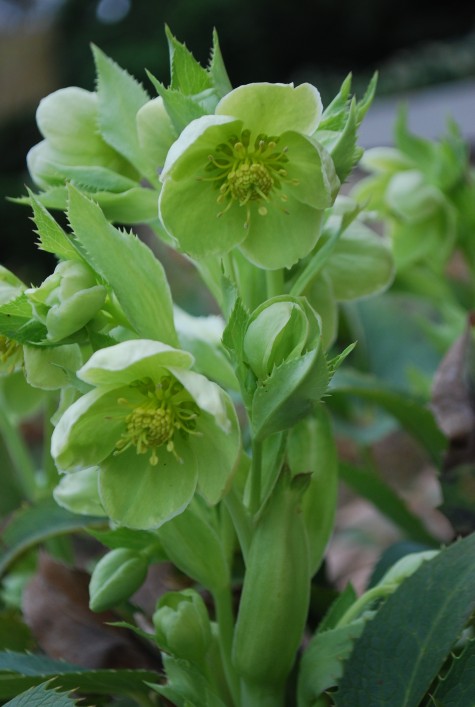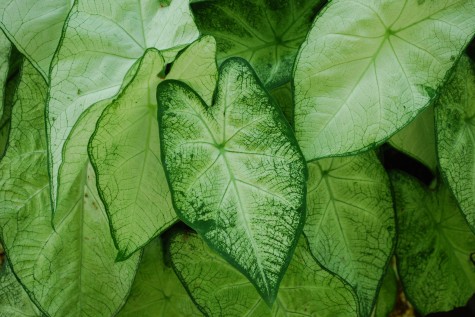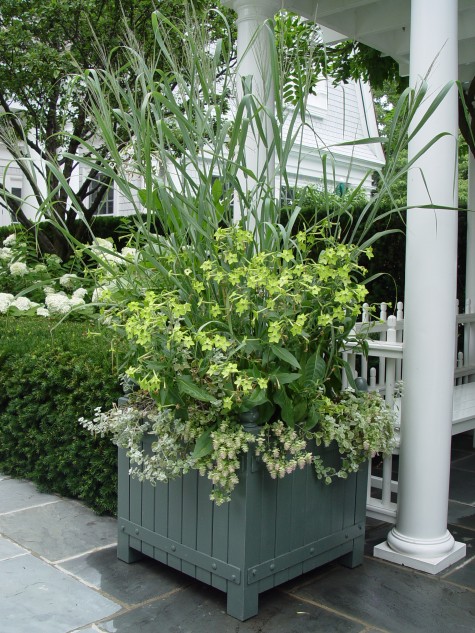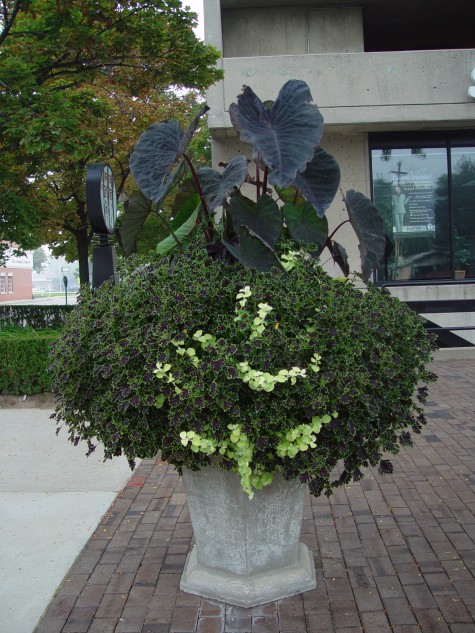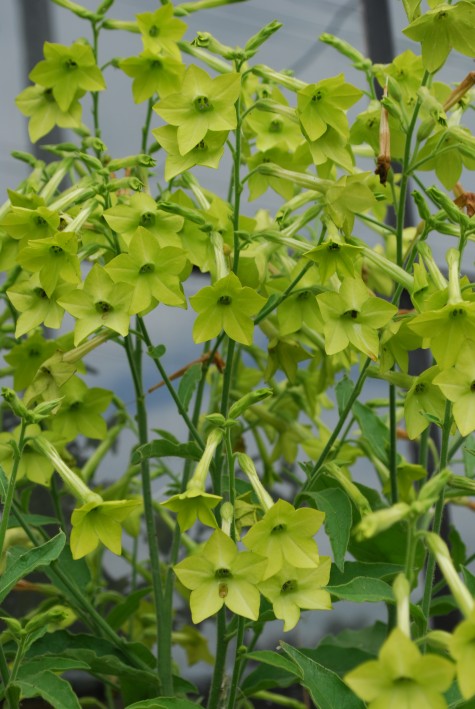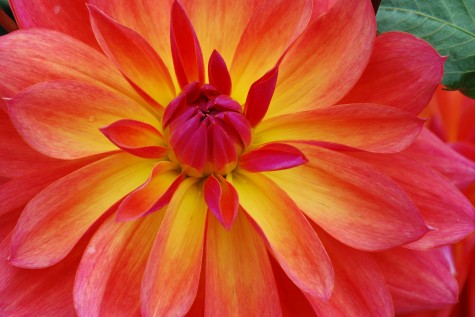 Thank heavens for red and yellow; I would not want to do without orange in my garden. This picture of an orange dahlia tells the entire story of what happens when red, in this case a very blue or carmine red, gets mixed with yellow. Fireworks. Daylilies are a staple source of orange in a perennial garden. If a daylily is not yellow, there is orange lurking in the petals in one form or another. Even a drift of the subdued daylily Ruffled Apricot can warm the eye from a distance. Orange is visually effective in even the smallest doses; is it not interesting how easy it is to spot the one lone blooming butterfly weed in the entire field? Even those who are not big fans of orange in theory can fall for an oriental poppy that color. Poppies look like they ought to be orange.
Thank heavens for red and yellow; I would not want to do without orange in my garden. This picture of an orange dahlia tells the entire story of what happens when red, in this case a very blue or carmine red, gets mixed with yellow. Fireworks. Daylilies are a staple source of orange in a perennial garden. If a daylily is not yellow, there is orange lurking in the petals in one form or another. Even a drift of the subdued daylily Ruffled Apricot can warm the eye from a distance. Orange is visually effective in even the smallest doses; is it not interesting how easy it is to spot the one lone blooming butterfly weed in the entire field? Even those who are not big fans of orange in theory can fall for an oriental poppy that color. Poppies look like they ought to be orange.
 Orange exists in a garden in other forms besides flowers. Interior arborvitae needles turn as rusty orange as this old fountain before they are shed. Iron garden ornament, and terra cotta pots are an excellent source of orange in the garden. I have had many people tell me their favorite season in Michigan is the fall-and I hear no grumbling about all the orange. What group of plants have you ever seen planted in a terra cotta pot that looked bad as a result of that orange pot? Orange in big brilliant doses is not for the faint of heart, but a little orange zest never hurt any garden.
Orange exists in a garden in other forms besides flowers. Interior arborvitae needles turn as rusty orange as this old fountain before they are shed. Iron garden ornament, and terra cotta pots are an excellent source of orange in the garden. I have had many people tell me their favorite season in Michigan is the fall-and I hear no grumbling about all the orange. What group of plants have you ever seen planted in a terra cotta pot that looked bad as a result of that orange pot? Orange in big brilliant doses is not for the faint of heart, but a little orange zest never hurt any garden.
 The trim on my house is painted turtle green. I suppose I chose the color as much for the name as the color. Olive drab would have been an equally believable name; this planting of solenia orange begonias in a dusty peachy orange Italian terra cotta pot makes that olive paint color come to life. The variegated licorice makes reference to the bluish green of the begonia foliage; the lime creeping jenny underneath keeps everything up top cooking.
The trim on my house is painted turtle green. I suppose I chose the color as much for the name as the color. Olive drab would have been an equally believable name; this planting of solenia orange begonias in a dusty peachy orange Italian terra cotta pot makes that olive paint color come to life. The variegated licorice makes reference to the bluish green of the begonia foliage; the lime creeping jenny underneath keeps everything up top cooking.
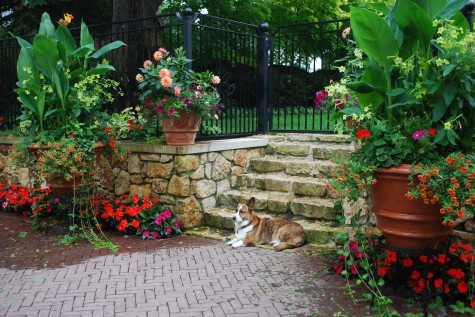 I did all of my summer flowers in some combination of orange, and carmine, or red-violet. It did scare the heck out of me once I got everything planted. I was worried to would be more excitement than I really wanted. No doubt these warm colors looked good with my yellow/orange stone, and the sandy yellow brick on my house-not to mention the purple/brown brick of my drive. The one year I planted all white flowers just didn’t work. Though Howard’s coat color is formally known as red brindle, he is a most handsome orange and white.
I did all of my summer flowers in some combination of orange, and carmine, or red-violet. It did scare the heck out of me once I got everything planted. I was worried to would be more excitement than I really wanted. No doubt these warm colors looked good with my yellow/orange stone, and the sandy yellow brick on my house-not to mention the purple/brown brick of my drive. The one year I planted all white flowers just didn’t work. Though Howard’s coat color is formally known as red brindle, he is a most handsome orange and white.
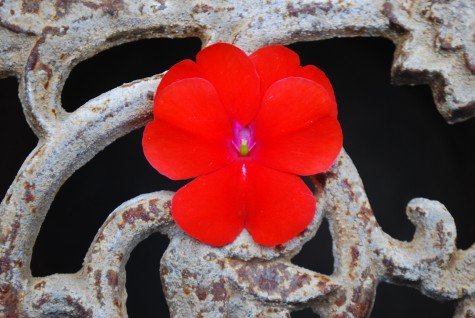 Though this Sonic orange New Guinea impatiens flower might make your eyes hurt, I find it easier to use in a garden than a blue red. I have a client that has been planting orange and white in her garden for many years. What many thought was eccentric fifteen years ago looked very fashionable and sophisticated this year. Funny, that.
Though this Sonic orange New Guinea impatiens flower might make your eyes hurt, I find it easier to use in a garden than a blue red. I have a client that has been planting orange and white in her garden for many years. What many thought was eccentric fifteen years ago looked very fashionable and sophisticated this year. Funny, that.
 Pink and orange together is such a lively and happy combination. Both Emilio Pucci and Lily Pulitzer based fashion empires on fearlessly friendly color combinations like this. If I only have the chance to make one point about color, it would be this. In isolation, a color may not appeal to you. But the real impact of color is about color relationships. What colors do for each other is more important than any color itself. It never hurts to take some of what colors you have when shopping for plants. Whatever your ideas might be about color, let your eyes make the decisions.
Pink and orange together is such a lively and happy combination. Both Emilio Pucci and Lily Pulitzer based fashion empires on fearlessly friendly color combinations like this. If I only have the chance to make one point about color, it would be this. In isolation, a color may not appeal to you. But the real impact of color is about color relationships. What colors do for each other is more important than any color itself. It never hurts to take some of what colors you have when shopping for plants. Whatever your ideas might be about color, let your eyes make the decisions.
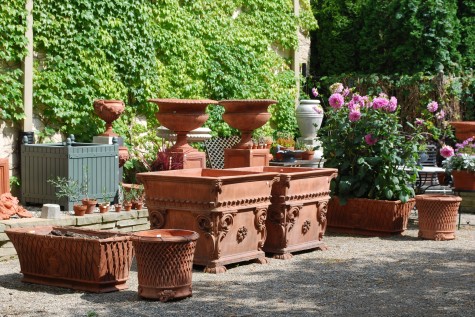
A little orange in the garden is a great idea.
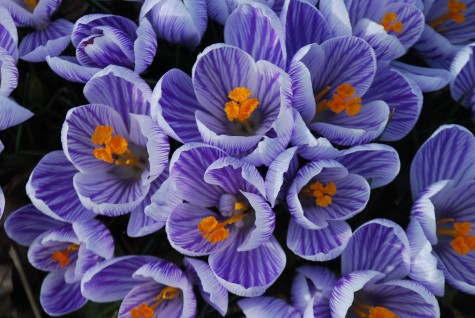 The first color I want to feast my eyes on when spring comes is purple. It could not be any further from the light, medium and dark drab I have been looking at for months. Purple flowers have a luminosity and depth that no purple paint could come close to-just try to paint a room crocus purple. Watercolor pigments, thoroughly suspended in water, and applied transparently over a white sheet of paper, come close to luminous. The gold yellow of these stamens are by direct contrast sure to attract pollinators as much as they attract me. But no one does luminous better than nature.
The first color I want to feast my eyes on when spring comes is purple. It could not be any further from the light, medium and dark drab I have been looking at for months. Purple flowers have a luminosity and depth that no purple paint could come close to-just try to paint a room crocus purple. Watercolor pigments, thoroughly suspended in water, and applied transparently over a white sheet of paper, come close to luminous. The gold yellow of these stamens are by direct contrast sure to attract pollinators as much as they attract me. But no one does luminous better than nature. 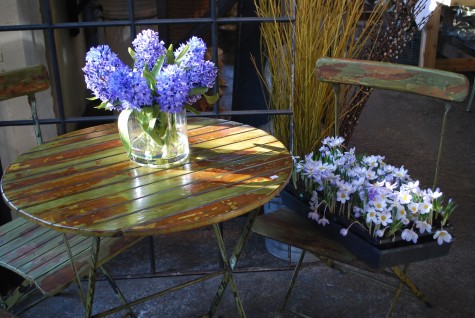 Though these lavender species crocus planted in a flat do not bloom for long, I pay my money, and go home happy. Sometimes I do the right thing, and plant tufts of them out in the garden. They rebound from the forcing amazingly well, and will take hold in the garden. The hyacinths are another story-these fabulous fakes fool the eye even up close. I have seen people touch them, to check if they are real. I think the fabric is dyed such that the color pools dark to light on each floret. The individual florets are thin enough to permit light to pass through-a more than decent try for luminosity.
Though these lavender species crocus planted in a flat do not bloom for long, I pay my money, and go home happy. Sometimes I do the right thing, and plant tufts of them out in the garden. They rebound from the forcing amazingly well, and will take hold in the garden. The hyacinths are another story-these fabulous fakes fool the eye even up close. I have seen people touch them, to check if they are real. I think the fabric is dyed such that the color pools dark to light on each floret. The individual florets are thin enough to permit light to pass through-a more than decent try for luminosity. 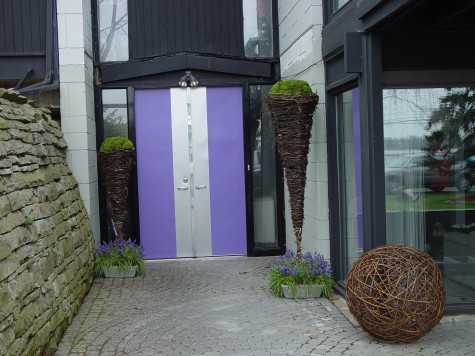 It is an unusual client who will commit to a purple door. I find this refreshing. The front door looks like a package ready to be opened, does it not? The grape hyacinths-who would not have them-all the species and every available hybrids-if they could?
It is an unusual client who will commit to a purple door. I find this refreshing. The front door looks like a package ready to be opened, does it not? The grape hyacinths-who would not have them-all the species and every available hybrids-if they could? 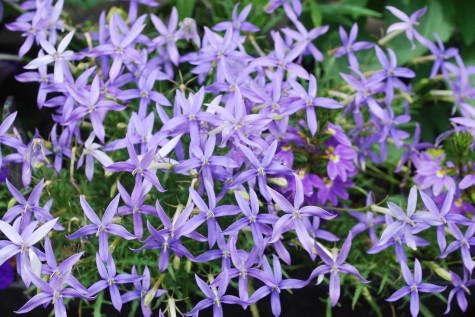 Laurentia is blue purple. Commonly known as heliotrope blue, the color startles me. In the smallest dose, it reads loud and clear. A small stand of this is as striking as an entire field of sunflowers, as it is so unexpected. An unexpected landscape element-what is yours?
Laurentia is blue purple. Commonly known as heliotrope blue, the color startles me. In the smallest dose, it reads loud and clear. A small stand of this is as striking as an entire field of sunflowers, as it is so unexpected. An unexpected landscape element-what is yours? 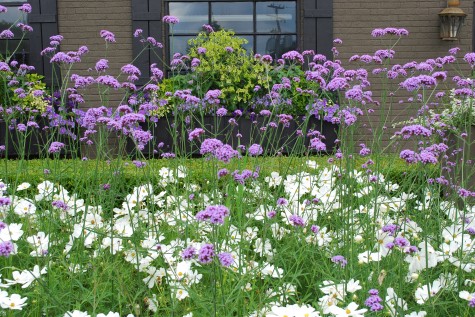 Verbena bonariensis is one of my favorite flowers. Endowed with all the airy grace of a meadow perennial, it is an annual in my zone. Drought tolerant, sturdily tall, a prolific seeder whose seedlings are easy to weed out-who could ask for more from a plant? These floating dots of red/lavender/purple are beautiful with just about every other color on the planet; this makes them friendly to just about any scheme you have in mind.
Verbena bonariensis is one of my favorite flowers. Endowed with all the airy grace of a meadow perennial, it is an annual in my zone. Drought tolerant, sturdily tall, a prolific seeder whose seedlings are easy to weed out-who could ask for more from a plant? These floating dots of red/lavender/purple are beautiful with just about every other color on the planet; this makes them friendly to just about any scheme you have in mind.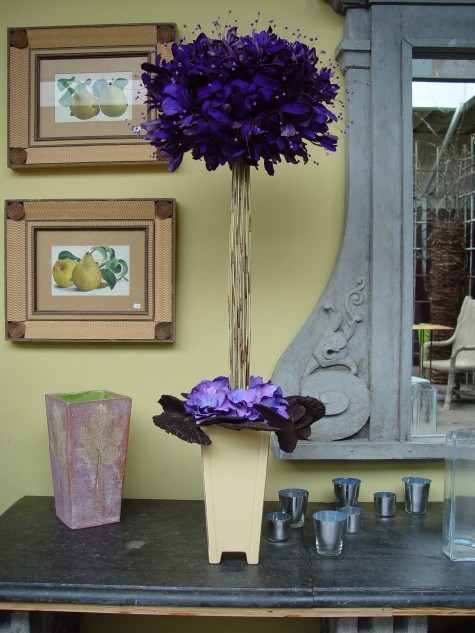 Integrifolia dyed purple is a rich royal purple. Placed in front of a pale greenish yellow wall, this complimentary color makes the purple glow. Though no light penetrates these leaves, pairing colors opposing each other on the color wheel is a reasonable approximation of luminosity.
Integrifolia dyed purple is a rich royal purple. Placed in front of a pale greenish yellow wall, this complimentary color makes the purple glow. Though no light penetrates these leaves, pairing colors opposing each other on the color wheel is a reasonable approximation of luminosity. 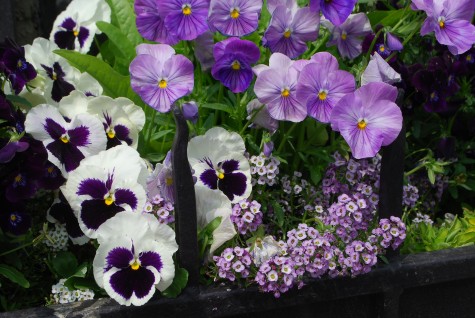 Pansy purple-everyone knows what that color is. I find it all the more precious as I have it in the spring and early summer-no other time. I call this alyssum the Easter mix-the mix of lavender and purple brings back memories of Easter Sunday hats. Those hats I only saw at Easter-never any other time of year. I am sure I had more than one Sunday dress in some variation of that purple.
Pansy purple-everyone knows what that color is. I find it all the more precious as I have it in the spring and early summer-no other time. I call this alyssum the Easter mix-the mix of lavender and purple brings back memories of Easter Sunday hats. Those hats I only saw at Easter-never any other time of year. I am sure I had more than one Sunday dress in some variation of that purple. 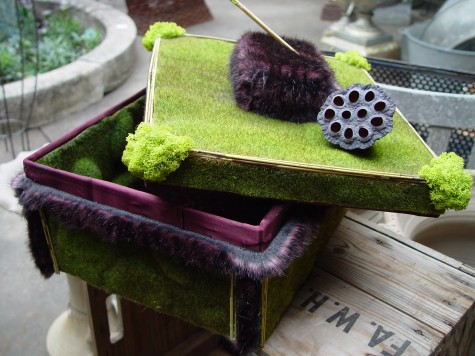 I call this a presentation boxes-don’t ask me what that means, exactly. Draw your own conclusions. This box I made from synthetic moss mats, lime green reindeer moss, natural reed, a particularly fine specimen of poppy pod-and purple fake fur. Purple and lime green-an inspired color combination.
I call this a presentation boxes-don’t ask me what that means, exactly. Draw your own conclusions. This box I made from synthetic moss mats, lime green reindeer moss, natural reed, a particularly fine specimen of poppy pod-and purple fake fur. Purple and lime green-an inspired color combination. 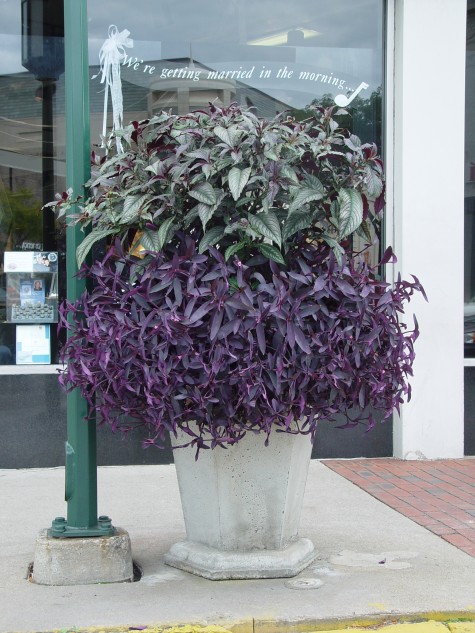 Purple can be moody, and fugue like. What I call Moses in the Cradle-this dark purple tradescantia, I plant liberally. It tolerates cold, heat, shade, sun and neglect. A new variety I tried this year has a white and cerise variegation; such a fancy outfit must be why it does not grow vigorously. But the ordinary Moses will make a stunning bouquet for you. Persian Shield is a moody mix of blue green and red violet in this more sunny location.
Purple can be moody, and fugue like. What I call Moses in the Cradle-this dark purple tradescantia, I plant liberally. It tolerates cold, heat, shade, sun and neglect. A new variety I tried this year has a white and cerise variegation; such a fancy outfit must be why it does not grow vigorously. But the ordinary Moses will make a stunning bouquet for you. Persian Shield is a moody mix of blue green and red violet in this more sunny location. 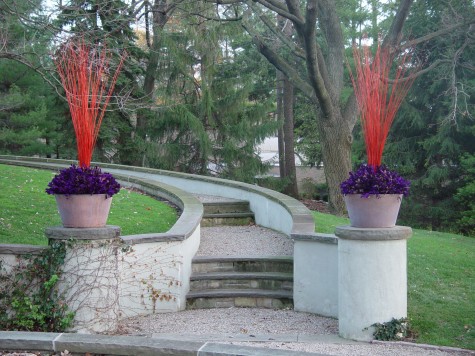
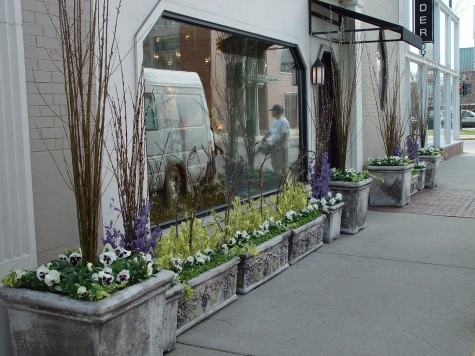 Tender is a very smart dress shop where they take their fashion seriously. As I take the landscape seriously, we relate just fine to one another. Commercial clients understand that the presentation of their business outdoors says a lot about what goes on inside. They want the outside of their store to look as fresh and newly conceived as what they carry inside. I am thinking about Tender today, as
Tender is a very smart dress shop where they take their fashion seriously. As I take the landscape seriously, we relate just fine to one another. Commercial clients understand that the presentation of their business outdoors says a lot about what goes on inside. They want the outside of their store to look as fresh and newly conceived as what they carry inside. I am thinking about Tender today, as 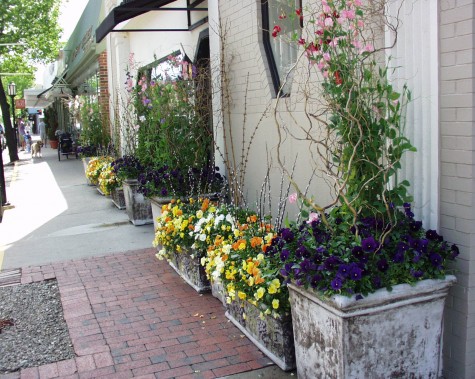 A container planting is a one-season committment. Unlike the landscape, the plants have to be replaced every year. The responsibility for a landscape can go on for many years. I sometimes don’t make changes that I should, out of sheer inertia. But my containers force change on me. I have no choice but to observe and learn how to do better, and redo them-or be stuck twiddling my thumbs from sheer boredom. A container planting is a miniature version of any landscape. I would much prefer growing up as a gardener over four square feet and some annuals, than 100 square feet and a truckload of shade perennials.
A container planting is a one-season committment. Unlike the landscape, the plants have to be replaced every year. The responsibility for a landscape can go on for many years. I sometimes don’t make changes that I should, out of sheer inertia. But my containers force change on me. I have no choice but to observe and learn how to do better, and redo them-or be stuck twiddling my thumbs from sheer boredom. A container planting is a miniature version of any landscape. I would much prefer growing up as a gardener over four square feet and some annuals, than 100 square feet and a truckload of shade perennials. 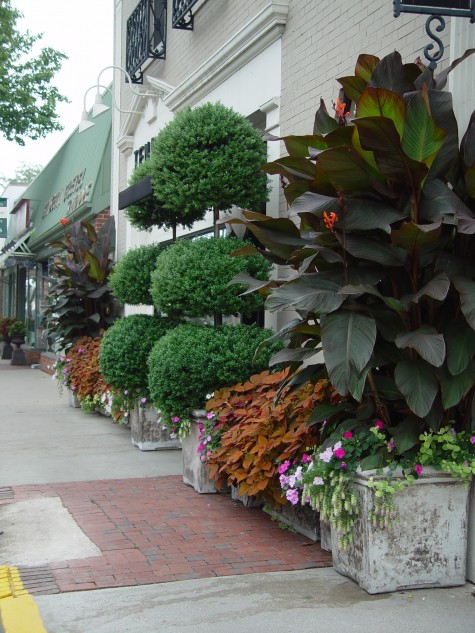
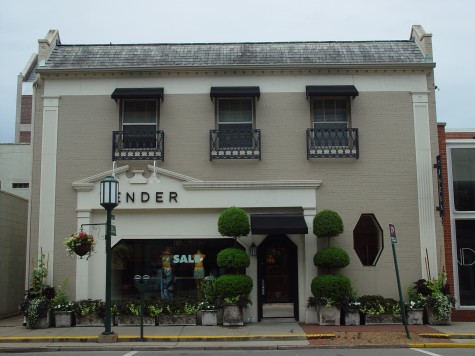

 Pumpkin hats on the conical boxwood-this made me smile. The willow sticks dyed orange-I bought an entire container load of these some years ago from Spain- in lots of jewel like colors. Several hundred thousand sticks-no kidding. Getting a phytosanitary certificate sufficient to get them through customs was a headache that made me want to black out. Though looking at this picture makes me want them again in the worst way, I know something new is just ahead of me.
Pumpkin hats on the conical boxwood-this made me smile. The willow sticks dyed orange-I bought an entire container load of these some years ago from Spain- in lots of jewel like colors. Several hundred thousand sticks-no kidding. Getting a phytosanitary certificate sufficient to get them through customs was a headache that made me want to black out. Though looking at this picture makes me want them again in the worst way, I know something new is just ahead of me. 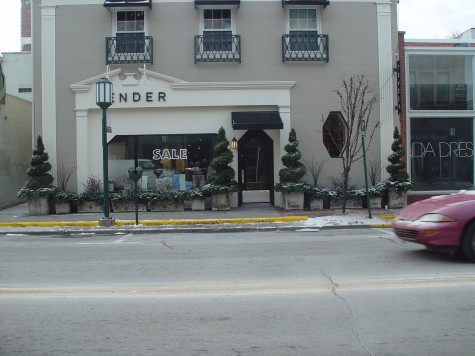 The winter is our quiet season. Our colors are subdued, but not our gardening spirit. But for these planters, with their Alberta spruce topiaries and their greens, this view would be more bleakly about concrete than need be.
The winter is our quiet season. Our colors are subdued, but not our gardening spirit. But for these planters, with their Alberta spruce topiaries and their greens, this view would be more bleakly about concrete than need be.  This year one gallon size PJM rhododendron and dwarf globe arborvitae filled the rectangular pots. I bought dead trees from my nursery supplier, and varnished the bark after dusting them with copper spray paint. Platinum ball ornaments and squares of tarred jute ornament the trees. Each tree had a bird’s nest of fine platinum colored wire at the base. A winter landscape.
This year one gallon size PJM rhododendron and dwarf globe arborvitae filled the rectangular pots. I bought dead trees from my nursery supplier, and varnished the bark after dusting them with copper spray paint. Platinum ball ornaments and squares of tarred jute ornament the trees. Each tree had a bird’s nest of fine platinum colored wire at the base. A winter landscape.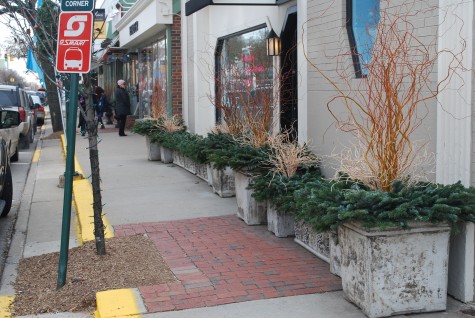


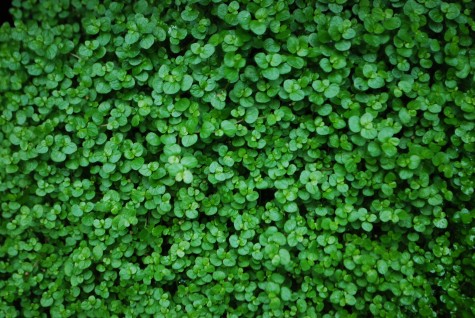 Judging from the numbers of people I try to help grow healthy yews who cannot spot that yellow/green yews indicate a water or drainage problem, I think green is so pervasive in a landscape, people stop seeing it. If you are not tuned in to green, you are missing a good portion of the pleasure and satisfaction of a landscape. Designing with green in mind-don’t miss this.
Judging from the numbers of people I try to help grow healthy yews who cannot spot that yellow/green yews indicate a water or drainage problem, I think green is so pervasive in a landscape, people stop seeing it. If you are not tuned in to green, you are missing a good portion of the pleasure and satisfaction of a landscape. Designing with green in mind-don’t miss this. 